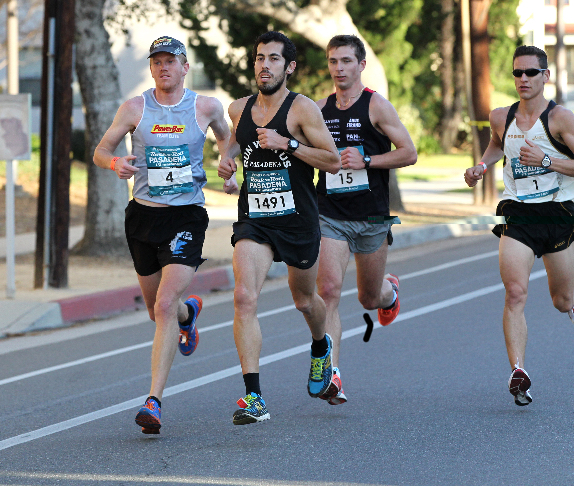How To Reduce Your Risk of Running Injuries
It’s that time of year again. As summer heat gives way to cooler temperatures, runners take to the streets. From 5Ks to half marathons to turkey trots, it’s the season for running. Unfortunately, that means it’s also the season for injury.
It’s estimated that close to eighty percent of runners suffer from some sort of injury. The most common injuries among runners include plantar fasciitis, IT band syndrome, shin splints, achilles tendonitis, chondromalacia patella, or runner’s knee, among others. Runners often complain of discomfort in the low back, hip, groin, knee, low leg, and foot. In most cases, running injuries are caused by structural imbalances, postural dysfunction, weaknesses in particular muscle groups , joint restrictions. Sometimes the actual pain is a referral pain from tight muscles, which when left untreated, inevitably cause injury.
Why stretching isn’t enough
I am often asked: “If I stretch, why am I still so tight and getting injured?” The answer is that when a muscle has a “knot” inside of it, stretching the muscle may not release the knot. The part of the muscle that stretches can become hyper-mobile while the knot is left untreated. My job as a Licensed Massage Therapist is to release these knots, break up adhesions and lengthen the muscle fibers for full oxygenated capacity for optimal endurance. “Should I use a tennis ball to break up these knots?” The answer is yes, but after a treatment/assessment because the goal is not only to break up knots but restore structural balance. For example, if a runner has a tight right hip with local pain, the right quadriceps, psoas and external rotators may be pulling the hip into a rotation on the one side. I would use specific techniques to release those muscles on the right and perhaps hamstrings/iliacus muscles on the left, followed by glute medius and transverse abdominus muscle activation to maintain a neutral pelvis. No foam roller, trigger point gun or gadget will do that!
Long-Term Injury Prevention
One of my favorite sayings is pain is inevitable, suffering is optional. Even if you aren’t in pain today, overtraining can lead to muscle fatigue and/or limited range of motion which will eventually lead to injury. Every runner would benefit from incorporating the right treatments before the body tells you it is in pain. Remember, we are aiming for a lifetime of healthy movement, not just a temporary fix so that we can finish the race. Too often, I see patients coming in days, weeks, months, and even years after marathons with overuse injuries that have led to long term chronic injury and pain. Most of these can been avoided with regular treatments.
The Crash
I frequently see a crash among marathon runners who have to stop their sport because they are physically burnt out. Runners who rely on massage as an integral part of their training regime minimize fatigue, delayed muscle onset soreness and have less compression in the joints. This allows for a faster healing and they are less prone to injury. Runners knee, for example can be minimized by releasing quadriceps muscles and fibrotic attachments at the IT band which can cause poor patella ( kneecap) traction, or perhaps it’s a joint restriction in the ankle - sometimes a combination of both. A good therapist will be able to determine this and reinforce proper biomechanics. In my practice, I constantly see these injuries that could’ve been avoided or even worse, had surgery which never resolved the original cause of the injury!
If you already have an injury and are in physical therapy, you still may not be getting enough hands-on work. For example, if a patient comes in with a meniscus tear, the PT will assess the injury as well the instability of surrounding muscles & joints. The therapist may have limited time to work on the hip or ankle, which may very well be the source of the injury to begin with. The experienced massage therapist can work on these particular areas and on areas of compensatory patterns (lower back, psoas, etc.), expediting the process of recovery. Often, I treat patients where physical therapy is not resolving the pain because it is necessary to release muscle knots and fascial restrictions before the exercises prescribed to break the pain cycle. I recommend that you search for a physical therapist that incorporates manual therapy or works in conjunction with a massage therapist. In the “long run”, will save you time, money and get you back on “track”.
Be Realistic
I am currently working on a 45-year-old male client on a weekly basis. His body is in top shape, pain and injury free. The other day, he told me that he started feeling some hip discomfort after 20 miles. This was due to a right hip rotation that was the result of a sprained ankle five years ago. The truth is is long distance running is a type of training that inevitably puts a huge amount of stress on the musculoskeletal system. The good news is that with regular body maintenance, you can relieve discomfort and avoid a full blown injury. He ran the next day, pain free after his treatment.
The focus and determination of marathon runners, triathletes and weekend warriors include regimented schedules: miles clocked, times and cross training as part of their training. A wise athlete should include bodywork as part of this training regime to prevent injury, avoid burnout and maximize performance.
Good luck to everyone preparing for / running in Marathons this year & happy trails!

